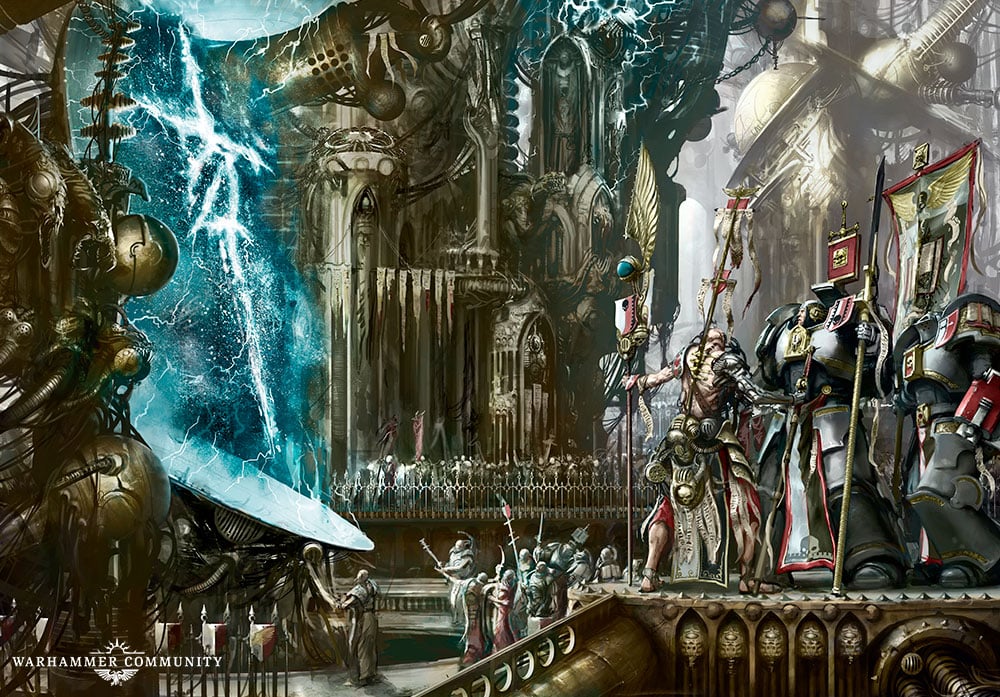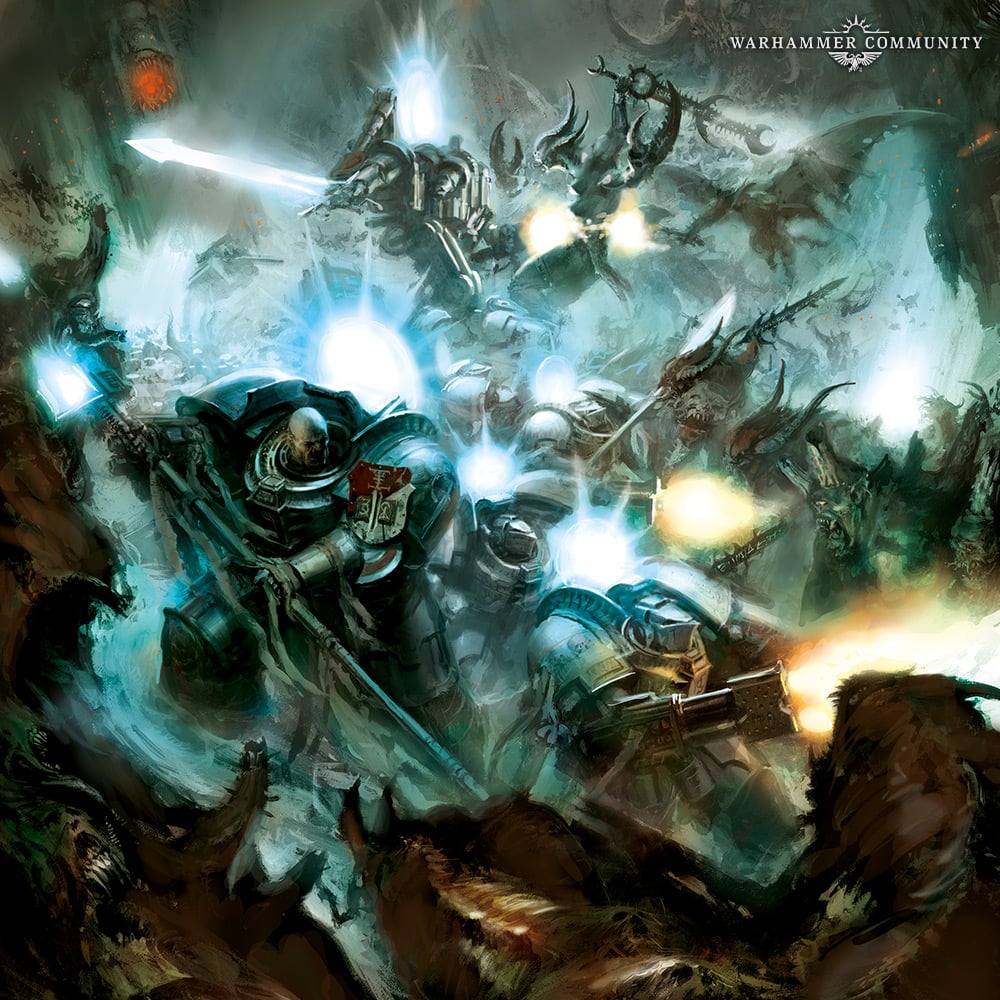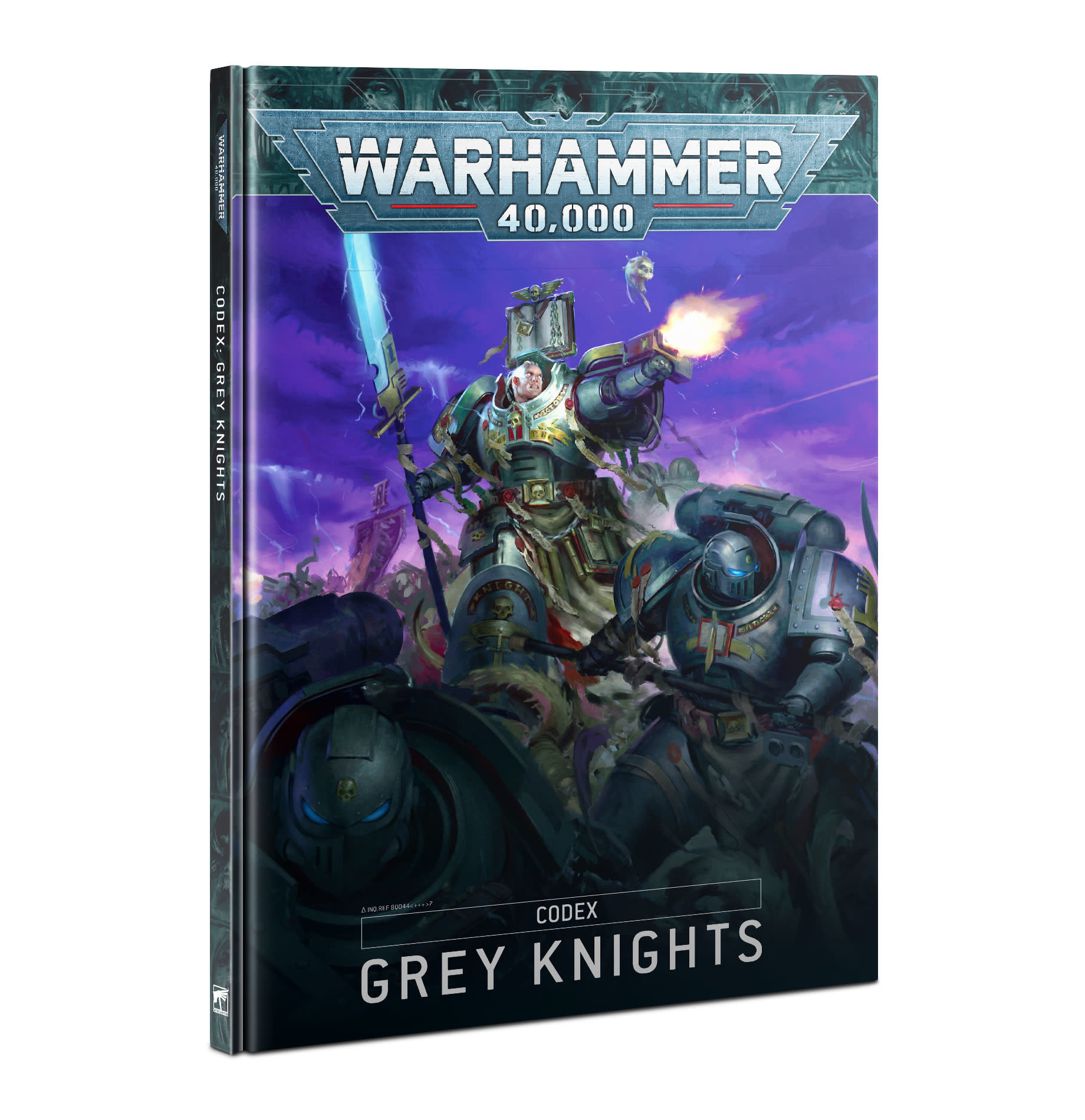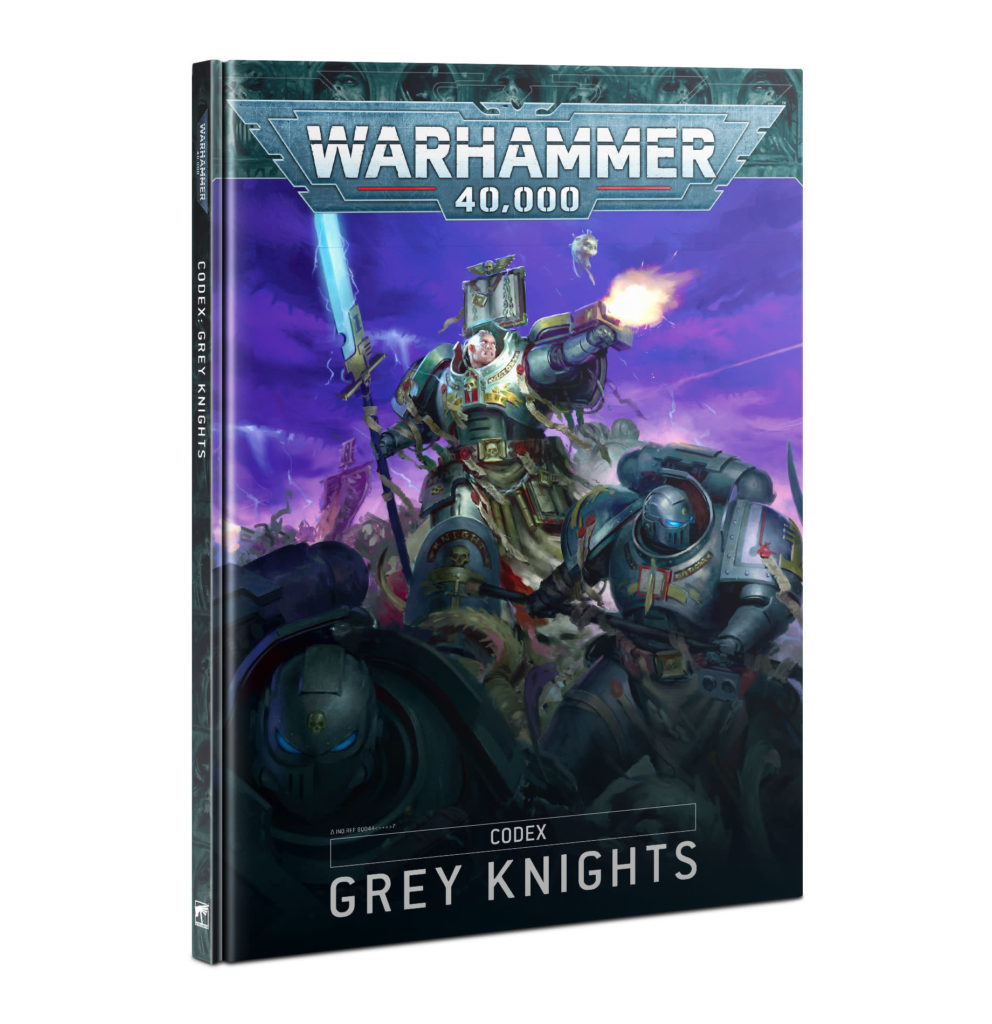So it’s been a while since my last narrative review so let’s take a dive into the Grey Knights book and see what it has to offer. The crusade portion of each codex has varied in flavor and power and I wonder what the writers at GW have is store here. As with my other reviews, I will divide up this article to cover the various elements of the crusade rules.
Army Special Rules
The special rules for the Grey Knights are one of the most innovative and creative rule sets so far. When one of the first Grey Knight codexes came out it had a section in it that described a set of reasons why the Grey Knights would be fighting each army in the game. They also had rules for adding a special chaos greater daemon to your opponent’s forces during narrative battles. GW has obviously channeled these rules as the special rules for the Grey Knights involves the creation of a Daemonic Nemesis. The Nemesis can be anything from a herald to a greater daemon. Throughout the campaign the nemesis can show up for free on your opponent’s army (only if they are chaos aligned faction and they roll a 5+, with some modifiers). The Nemesis gets its own agenda and can level up like any other crusade unit. If the nemesis is slain after a battle you roll some dice to determine if it was truly banished or if it will return again (once again with a healthy set of modifiers).
On the one hand, I love these rules as they are perfect for the Grey Knights. It also makes the player choose between giving their opponents a powerful unit for free and getting the chance to earn a lot of buffs for killing it. The one thing I wish is that they had expanded the list of possible nemesis beyond just chaos units. Right now if you have a small campaign without any chaos players you are just playing marines with extra steps. My advice would be to expand it to include: the Avatar, the Avatar of Ynnead (examples of Eldar Daemons, you could even have a warlock be a herald-like option), C’Tan (not true daemons, but close enough) etherials etc. Just so that there is a greater likelihood of being able to use these fun rules.

Agendas and Requisitions
Grey Knights players should be pretty happy with the selection of Agendas they can pick. While a few are predicated on being able to fight a Daemon or Nemesis there are a few that can provide a lot of experience. No Witness is fluffy but I am hesitant to approve anything that incentivizes you to table your opponent. Psychic Fellowship is hilarious as you can get 5 exp per unit per battle (granted you have to do psychic actions). Cleanse ground is a solid option if there are a lot of objectives and Ancient Enemy can be amazing vs Daemon players.
Grey Knight Requisitions are brief but really good. You can put a character in a dreadnought or dreadknight for 1 RP (criminally cheap for the latter). You can also make a super character with another requisition for a character with 71+ experience giving them an extra battle honor. The final one is a very fluffy ability to give an extra gift or vision to one character.

Honored Titles
Like the Space Marine codex the Grey Knights have their own set of titles. Some are reprints but others are actually locked to specific brotherhoods which is fun. They are mostly pretty good and at the worse very fluffy, it may be worth bringing multiple Grandmasters to make the most out of the buffs.
Relics
The basic Grey Knight relics are decent with an option to troll each of the chaos powers especially Khorne or Tzeentch (getting to ignore Khrone invulnerable saves or getting +3 to deny is brutal). Ironically I think the mid-tier relics are better then the ultimate relic which just allows a psycher to know all Grey Knight powers and get an additional cast and deny. The one limitation is that many of the mid-tier relics are tied to specific units making it harder to develop a lone super-character.

Traits
The trend of no faction-specific battle scars continues (further confirming my suspicion that the DE ones were too powerful). I think these tables are another great win for Grey knight players. There are trait options for Terminator, Apothocary, Techmarine and Machine spirit units as well as psychic fortitudes for character and non-character units. The terminators get some interesting options that are contingent on other actions (ie. cast a power and get +1 AP_ etc. Which is a fun change to see, other options allow you to spend less CP for certain strats which is another way to make these units unique. In addition the machine spirit options (a re-print from the Space Marine Crusade rules) can give you +3 to a unit’s WS as well as +2 wounds finally allowing for you to build the elusive close-combat landraider beatstick army. The psychic fortitude for characters are mostly useless but holy cow are they good for non-character units, you have the option to do psychic actions and still cast other powers, force your opponents units to take a mortal wound if they fail to deny a power or get +1/+2 to deny based on the unit sizes. These are all great options and add some fun wrinkles to how you use your units.
Conclusion
After a lack-luster set of rules for the Thousand Sons I am very happy with the Grey Knight rules. While I think they aren’t going to be as much fun if you don’t have a chaos army to play against, their traits and agendas can make some amazing units.
And remember, Frontline Gaming sells gaming products at a discount, every day in their webcart!




